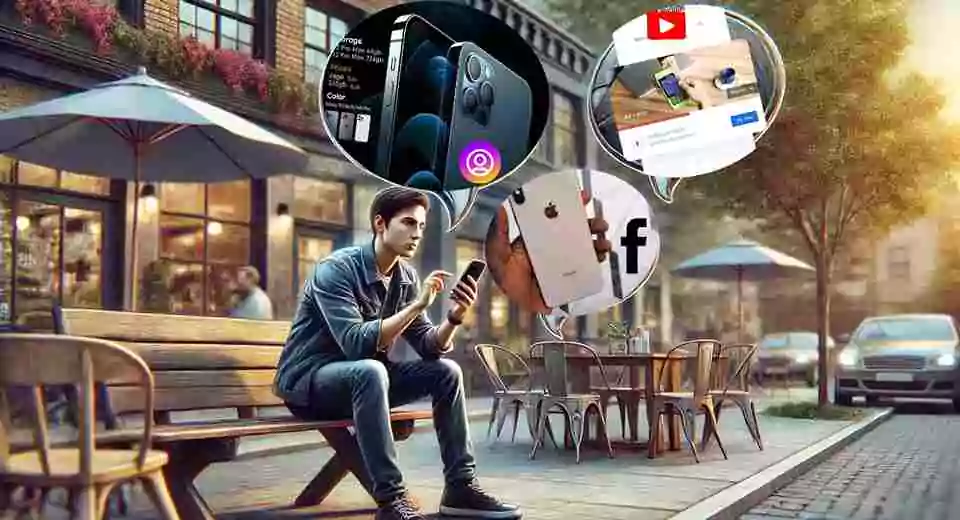Have you heard of this concept “What is seen is what sells.” But appearing only one time doesn’t make sense. Yes this is the catch, the psychology behind the sales. Getting in front of your ideal customer once or twice isn’t enough to close a deal. The reality? If you want your marketing efforts to pay off, you need to think in multiples—multiple interactions, multiple channels, and multiple touchpoints.
Why One-Time Exposure Isn’t Enough
The rule of three is the bare minimum. If your product is inexpensive, three interactions might suffice to capture your audience’s interest and convert them into customers. But for high-ticket items worth $10,000 or more? It takes an average of 23 touchpoints before a potential buyer feels comfortable making a purchase.
This doesn’t mean pestering your audience—it’s about creating valuable, engaging content that keeps your brand top of mind. Repeated exposure builds familiarity, and familiarity breeds trust.
These data’s are taken from Neil Patel’s linkedin posts
Marketing are always Internconnected
Here’s where many marketers go wrong: they assume that a channel isn’t working if it doesn’t directly drive conversions. Your analytics might show that Facebook ads aren’t leading to purchases, or that your blog traffic isn’t resulting in sales. But don’t pull the plug just yet.
Here’s why: marketing is interconnected. People might discover you on social media but later convert through a Google ad. Or they could stumble upon your blog post, then decide to buy after seeing an email campaign.
Look at the big picture. Attribution models often fail to capture the entire customer journey, especially if it spans multiple channels and devices.
Omnichannel Marketing: Show Ads to Your Ideal Customer Multiple Times
To build those crucial touchpoints, you need to adopt an omnichannel strategy. This means leveraging multiple platforms to reach your audience—whether it’s through email, social media, paid ads, or organic search.
Here’s a simple way to show your ads repeatedly to your ideal customers using your website, Facebook, and Instagram. Follow these steps:
Use Retargeting Ads
Retargeting shows your ads to people who visited your website or interacted with your posts.
How to do it
- On Facebook and Instagram, go to Ads Manager and create a “Custom Audience” based on people who visited your website.
- You need to set up a Facebook Pixel on your website for this. It tracks visitors and helps retarget them with ads.
Post Regular Content
- Share posts, stories, and reels about your product on Facebook and Instagram multiple times a week.
- Make posts engaging, and use hashtags that your customers search for.
Use Email or SMS Marketing
- Collect emails or phone numbers on your website (offer a discount to encourage this).
- Send reminders about your product through email or messages to keep showing your product to them.
Boost Important Posts
- On Instagram and Facebook, you can boost posts that already perform well to reach more people.
- Choose your ideal audience (e.g., age, location, interests).
Collaborate with Influencers
- Partner with influencers on Instagram to promote your product.
- Their followers will see your product multiple times if the influencer mentions it more than once.
Run Consistent Ads
- Schedule your ads to run continuously for a week or more.
- Keep refreshing your ad designs every few weeks to keep people interested.
If you follow these steps, your ideal customers will see your ads multiple times, increasing the chances they’ll buy!
The Psychology Behind Repeated Interactions
Repetition doesn’t just help with brand recognition—it taps into psychological principles that influence buying behavior:
- The Mere Exposure Effect: The more people see your brand, the more they like and trust it.
- Social Proof: Multiple touchpoints allow you to showcase testimonials, reviews, or case studies.
- Scarcity and Urgency: Limited-time offers create FOMO (fear of missing out) during repeated interactions.
Focus on the Long Game
Success isn’t measured by a single metric like clicks or impressions—it’s about how well your channels work together to guide prospects down the funnel. Instead of focusing solely on last-click attribution, consider multi-touch attribution models to better understand the customer journey.
Patience Pays Off
In the world of marketing, patience is more than a virtue—it’s a strategy. Building trust, familiarity, and credibility takes time and multiple interactions. By leveraging an omnichannel approach and understanding the psychology of repeat exposure, you can create a marketing system that doesn’t just drive traffic but converts it into loyal customers.
Remember, marketing isn’t about instant gratification. It’s about sustainable growth—and that requires showing up, again and again.
Optimize your business profile everywhere and start showing your product or services to customers – contact Content Ladder
Ideally, customers need to see your ad at least 3 times, and for high-ticket items, it may take up to 23 interactions. Data taken from Neil Patel’s LinkedIn posts.
Online ads create awareness, engage customers, and guide them through the sales funnel by leveraging multiple interactions.
Targeted ads like Google Search Ads, social media retargeting, and video ads are effective for converting potential customers.
The ideal ad frequency depends on the product type. For general items, showing ads at least 3 times works, while for high-ticket items, up to 23 interactions may be needed to convert.
Overexposure can lead to ad fatigue, causing customers to ignore or even develop a negative perception of your brand. Balance frequency by analyzing audience behavior and engagement metrics.

